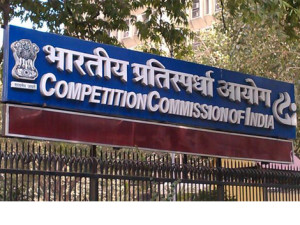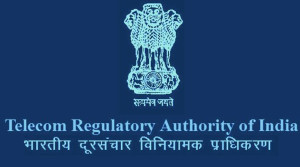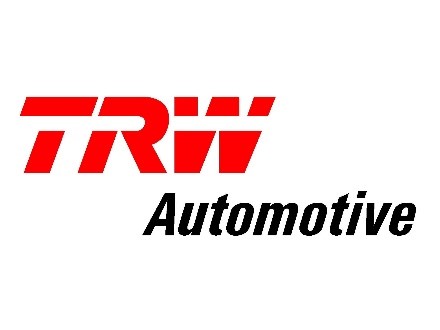So the regulatory “war” has begun in India in the backdrop of the ongoing tussle between telecom giants to grab the maximum share of the huge market for telecom services, both voice calls and data services. Somewhat like the famous Smartphone Patent wars in Europe and elsewhere (including in India between Eriksson and local manufacturers like Intex, Micromax), this tussle over jurisdiction is between the Fair Market Watchdog, the Competition Commission of India (CCI) and the sector regulator, the Telecom Regulatory Authority of India (TRAI).
The trigger is the recent letter dated 21 July, sent by Devender K. Sikri, chairman, CCI letter to R S Sharma, chairman, Telecom Regulatory Authority of India (TRAI). As reported in The Economic Times on July 27, chairman , CCI has pointed out that “ telecom regulator’s move to create an analytical framework on predatory pricing, which rests upon definitions, concepts of the Competition Act and decisional practices of international anti-trust jurisdictions, may blur the lines between the two bodies and lead to confusion”. As also reported in MINT on the same day , TRAI is in the process of coming out with policies on tariffs, including aspects related to abuse of market dominance or predatory pricing.
Undoubtedly, CCI is the sole expert body constituted under the Competition Act, 2002 for deciding all competition related issues and it has a statutory mandate to sustain and promote competition in markets across all sectors. CCI now has the necessary experience and economic skills to better understand the complex legal and economic arguments which both sides are likely to bring out. Significant jurisprudence on competition law has been developed in India during the last 8 years of enforcement through orders of CCI, Competition Appellate Tribunal (COMPAT) and the High Courts /Supreme Court. Issues such as when offering a service below cost constitutes “predatory” pricing to eliminate competition have also long settled in other advanced jurisdictions such as USA, EU etc. and CCI is better poised to apply them in Indian context to take a correct view . Parliament in its wisdom has also provided a statutory mechanism for voluntary consultation between CCI and sector regulators such as TRAI, IRDA, PNGRB, CERC etc. Thus, as rightly stated by Mr. Pradeep Mehta of CUTS International, “Promotion of competition is everyone’s duty but checking anticompetitive practices is the sole duty of CCI”.
On the other hand, the counter argument could be that competition regulation being ex post cannot regulate pure intra -sectoral issues such as determination of tariff, which the sector regulator is better poised to decide. Moreover, as an ex post and overarching economic regulator, CCI needs to follow a hands-off approach in sectors and should encourage sector regulators to sustain healthy competition through its policies and regulations.
In the above context, it can also be stated as to what was wrong if TRAI as the telecom regulator included a chapter on “anti-competitive behavior in tariff offers” in its Consultation paper on regulatory principles of tariff assessment issued in February this year? One reading on the said chapter will show how TRAI has taken efforts to include latest international guidelines and case laws from matured jurisdictions on the issue of abusive conducts of dominant players in telecom sector and has outlined four relevant markets based on international experience in telecom sector. In the absence of sufficient jurisprudence in India on telecom sector, one can say that CCI would also have used the same authorities and would have outlined same relevant markets at least! In fact, the effort of TRAI to lay down guidelines for clarity of all stakeholders in the telecom sector ought to have been commended since CCI may not be in a position to do so for each sector.
Arguments of lack of jurisdiction of CCI, due to perceived overlaps of jurisdiction with sector regulators, such as PNGRB, CERC, Copyright Board, Controller of Patents have been raised in past by parties to suit their requirement before CCI and CCI has also either avoided interfering in some cases or has proceeded with the inquiry only after the jurisdictional issue has been resolved by the higher Courts. Since such overlaps on jurisdiction are ultimately decided by the Courts, let us see how the higher courts have viewed them so far. In 2011, Delhi High Court stopped an investigation ordered by CCI against a perceived cartel between the three State Oil Marketing Companies, IOCL, BPCL and HPCL on a complaint by Reliance for supply of Jet aviation fuel and referred to PNGRB, the Petroleum regulator. In 2012, the same High Court left the decision on jurisdiction overlap between CCI and the Copyright Board on the issue of determination of abuse of dominance by T-Series in grant of license to FM 104 on allegedly excessive rates to CCI. CCI accordingly decided it had jurisdiction to decide whether there has been abuse of dominance by T Series or not while leaving the rates to be decided by the Copyright Board. In 2014, the same High court stayed an investigation into affairs of the Institute of Chartered Accountants of India by CCI and the matter is pending. In 2014 again the same High Court left it to CCI instead of CERC to decide whether MAHAGENCO has abused dominance by refusing to provide open access to the other Independent power producers. In March, 2016, the same High court in a detailed judgement, inter alia, refused to stop the CCI inquiry against Ericsson on ground of pendency of civil suits for patent infringements against Intex and Micromax. So there is a gradual shift and the judiciary now accepts CCI jurisdiction on competition issues over sector regulators.
Let us now examine how such overlaps are resolved in other countries. A research study commissioned in 2012 by the Indian Institute of Corporate Affairs on international experience[1] shows that there are two main models followed throughout the world, firstly, sector regulators dealing with competition issues within their own sectors and secondly, concurrent jurisdiction of both with equal powers and mandatory consultative process. The United States follows the first model and sector regulators such as Department of Transportation (DoT) is authorized to grant antitrust immunity, whereas the second model prevails in United Kingdom.
In the United States the sector specific laws also include antitrust provisions and a consensus has emerged after two landmark judgments[2] of the US Supreme Court that where the sector specific legislation provides sufficient guidance on antitrust issues, the federal antitrust agencies i.e. Federal Trade Commission (FTC) or the Department of Justice (DoJ) need not intervene under the Sharman Act or other federal antitrust statutes.
In the UK model, which is followed in many other countries such as Brazil, both the sector regulator and the erstwhile Office of Fair Trading (OFT) shared powers to make references to the Competition Commission. The members of both OFT are allowed to participate in the hearings before sector regulator once issues relating to competition are raised by any party. This continues even after the formation of the Competition and Markets Authority (CMA). Moreover, there is common appellate body for the competition regulator and sector regulator namely the Competition Appellate Tribunal (COMPAT).
Some countries such as Ireland and Spain experimented with a third model (akin to that in India) i.e. coordination model. In Ireland, for instance, formal cooperation agreements were executed between the competition and sector regulators. In Spain, like India, both competition and sector regulator were empowered to give opinion to each other though the same was non-binding. But this did not work and a new approach by creating a super regulator i.e. the National Commission for Markets and Competition (NCMC) was created which combined the regulators for energy, telecom, gaming, airports and postal agencies with the competition regulator. This has worked well and is also followed in Australia and New Zealand.
The process of mandatory consultation between competition regulator and sector regulators is followed in Argentina, France, Turkey and Zambia but the collaborative approach is followed in Mexico wherein the competition issues are dealt with by the competition regulator and the pricing issues by the sector regulator with a common appellate authority.
Therefore, there is a transition noticed from the voluntary consultative process to a mandatory consultation process in other matured jurisdictions with the concurrent jurisdiction model gaining popularity.
Therefore, in view of this author, ideally the TRAI should deal with the ex-ante technical and tariff issues and leave the determination of pure competition/antitrust issues such as abuse of dominance including predatory behavior (which may not be restricted to predatory pricing alone, as per existing jurisprudence) to CCI and there should be a common appellate authority of both to resolve differences of opinions.
Incidentally, an attempt to resolve such conflict issues was made in the previous government of UPA -2 when the Ministry of Corporate Affairs’ high powered Committee on National Competition Policy and Allied Matters had recommended in 2011 that the Competition Act be amended to , inter alia provide for mandatory consultation between the CCI and sector regulator on overlap issues. However, the policy is yet to see the light of the day in the present NDA regime and no one seems to be interested to revive the amendment bill.
Turf wars like the present one are any lawyer’s delight! Such overlaps can be resolved if TRAI deals with the ex-ante technical and tariff issues and leave the determination of pure behavioral issues to CCI with a mandatory and binding consultative process between the two. The Center should consider reviving the National Competition Policy gathering dust since 2011.
[1] http://oldwebsite.iica.in/images/Harmonising%20Regulatory%20Conflicts.pdf
[2] Verizon Communications, Inc. v. Law Offices of Curtis V. Trinko, 540 U.S. 398 (2004) and Credit Suisse Securities v. Billing, 551 U.S. 264 (2007).









